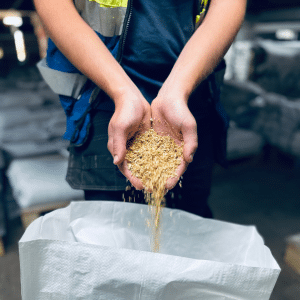A few years ago, Stancold Food Projects released a blog post discussing the advantages of PIR panels over traditional polystyrene panels and the evolution from polystyrene to PIR within the food construction industry. Five years and many food-safe fit-out projects later, they have revisited the topic in a new article discussing why food and drink producers are moving away from polystyrene in greater numbers.
Polystyrene vs. PIR: Fire Safety in Food and Drink Facilities
The key disadvantage of polystyrene lies in its highly flammable nature. In live food and drink production environments, this is far from ideal.
Exposure to open flames or electrical sparks can cause polystyrene to ignite rapidly. Once alight, it not only burns quickly but also promotes fire spread across adjacent areas. Additionally, melting polystyrene releases carbon monoxide and various toxic gases.
PIR panels, on the other hand, can allow for food and drink producers to achieve a higher fire-rating, so food-safe and fire-rated do not have to be competing site priorities! A fire rating depends on both the structural properties of the walls and the installation methodology.

Saving Facility Space With PIR
Also, with the move to PIR panels in the food and drink production industries, producers can use thinner panels to achieve the desired levels of insulation. Multiple sources point towards PIR being 30-50% more thermally efficient than polystyrene.
Thinner panels ultimately translate into increased internal space. This may not seem significant, but if you are using a space for storage, that thinner panel could allow you to fit a few more boxes or pallets. For fast-moving, high-volume food and drink production sites, every little bit helps!
The Insurance Red Flags Around Polystyrene
Stancold’s Food Projects Specialists are also noticing external reasons why food and drink producers are making the shift from polystyrene to PIR in increasing numbers.
First, polystyrene could raise red flags with insurers. Stancold’s team members have had many conversations with producers who need to convert an existing area from polystyrene to whitewall because their insurers will not quote an in-use facility with polystyrene panels in critical areas.
Polystyrene is seen as high-risk by insurers because of its potential to spread fire and the risk to structural integrity that fire can cause.

Polystyrene Panels Under Scrutiny in Supplier Audits
Audits, in various forms, are a constant for large UK food and drink producers, and polystyrene panels could draw an auditor’s attention.
Audits can come from multiple sources. Food and drink sites need to go through a strict audit process to achieve SALSA or BRC certification.
When those outside of the industry think of audits, probably the first thing that comes to mind is regulatory bodies such as BRC or SALSA, but food and drink sites could be facing audits from other, more commercial entities.
If a food or drink production site becomes a supplier to a major retailer or another larger producer, they often have to go through an audit process put in place by their customer.
‘Larger retailers and food companies have high standards for where their ingredients or other food items are produced,’ says Stancold’s Business Development Manager for Food Projects, Andy Connell. ‘They are looking for the best, most up-to-date facility elements possible.’
Polystyrene can often miss this standard as it is not the latest technology, and a potential fire in the facility could disrupt the customer’s supply chain.
Just recently, one of Andy Connell visited a site that needed to get rid of polystyrene in an area of their facility because it would not pass a new major customer’s supplier audit process.
With the clear risks and increasing pressure from insurers and auditors, now is the time to move away from polystyrene panels. If you would like to learn more about how Stancold Food Projects can create safer, smarter, and more operationally efficient facility fit-outs for the UK’s food and drink industry, get in touch with their team:
📞 0117 316 7000
📧 info@stancold.co.uk





